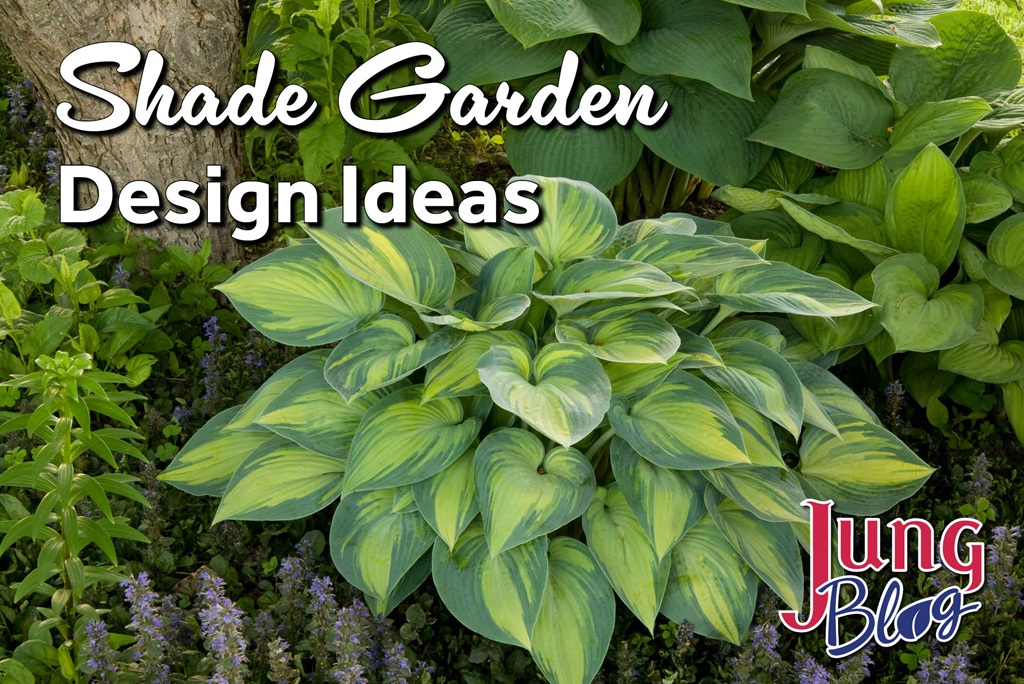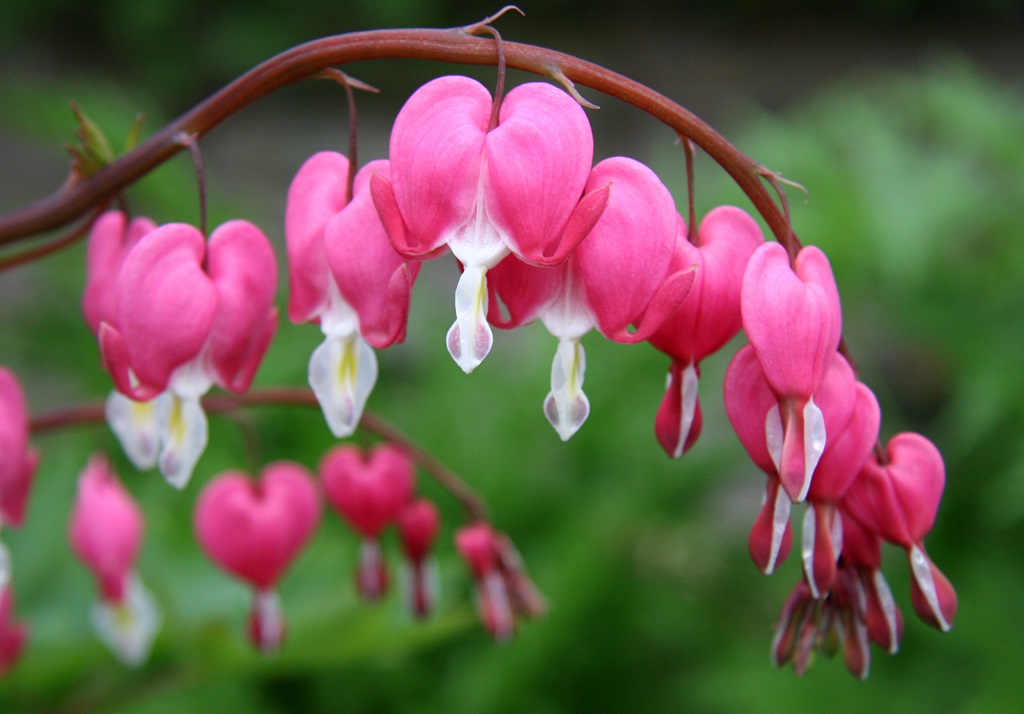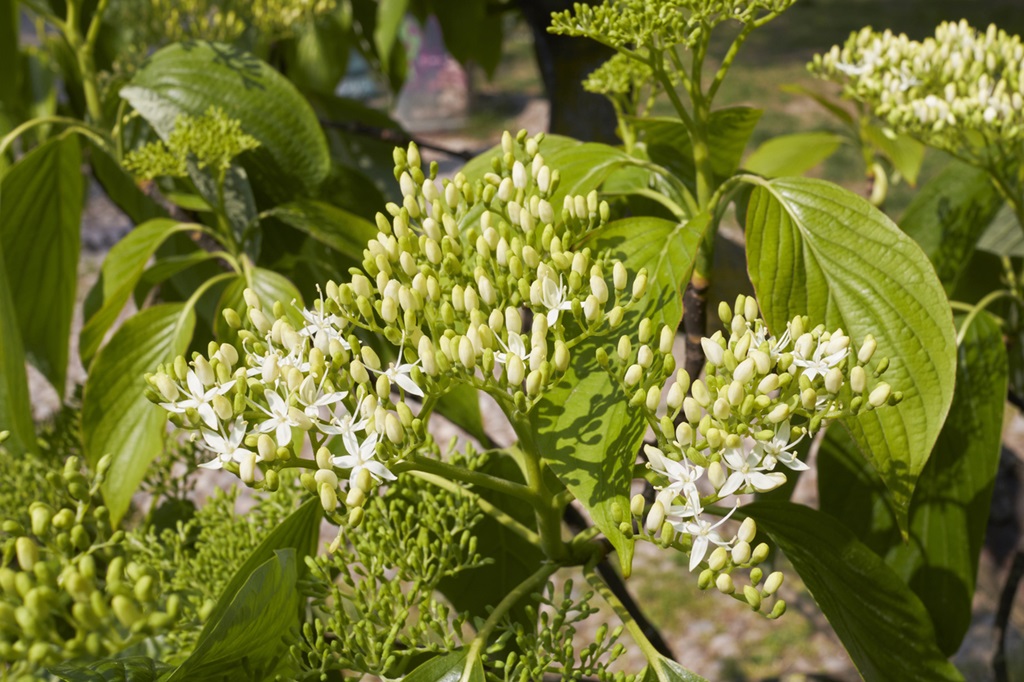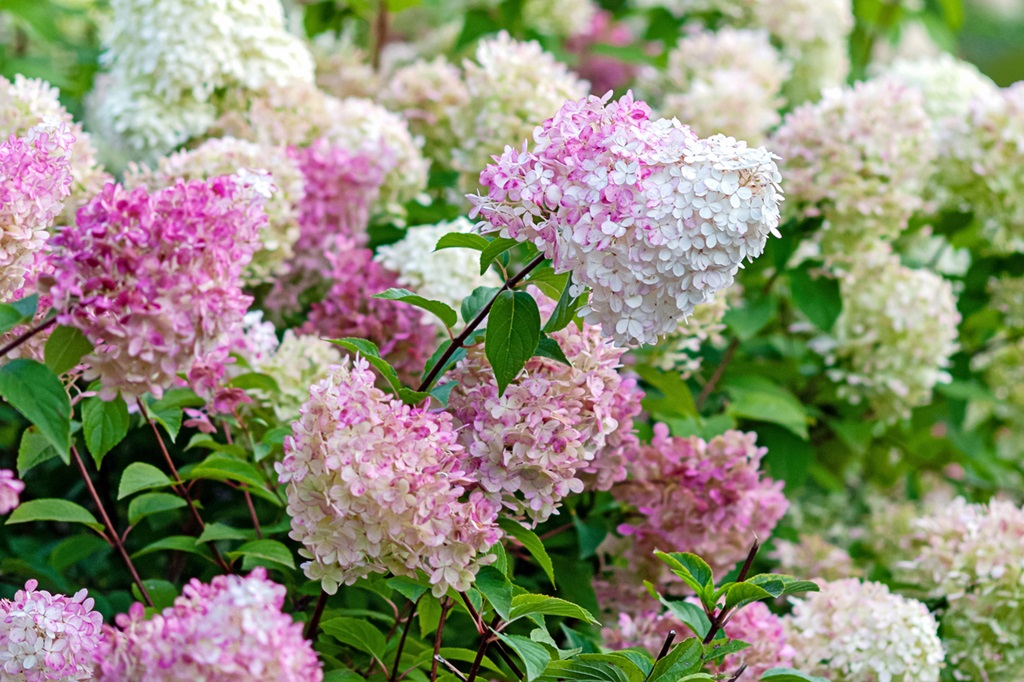
What comes to mind when you think of gardening in the shade? For me, it’s a chance to think outside the box and grow a unique garden. In some ways, shade can be limiting, but many plants will thrive in these conditions.
Advantages of Gardening in Shade

The shade allows you to combine colors and textures and create a peaceful space in your garden. If you have mature trees, consider underplanting them with perennials and making a walking path that weaves visitors through the garden. Add seating areas for those hot summer days when you need somewhere cool to relax or install a small water feature to add even more tranquility to the space.
Planning your Shade Garden

Whether filling a small space under a tree or planting a large woodland garden, it’s essential to understand how each plant grows to avoid overcrowding your garden.
Types Of Shade
Landscapes can have different types of shade, ranging from dappled to deep shade. Areas of dappled shade tend to be brighter, making it easier to grow plants that require slightly more sun. Deep shade tends to have little direct sunlight, making it hard to grow most flowering plants. Many plants will survive in the shade, but knowing how much sun your garden receives is crucial for a thriving garden.
Soil
Soil determines how much water and nutrients your plants will receive. Sandy soil will lose water and nutrients quicker than soil with higher amounts of clay. Adding compost and other sources of organic matter can improve your soil, but consider sending a soil test to your local extension office to address specific needs for your garden.

Moisture
Moisture is another factor that plays a crucial role in choosing plants. Large trees often have roots that absorb much of the moisture under the trees, making it hard for plants to grow. Buildings can also limit moisture, especially under overhangs. Shady areas often retain moisture, which helps plants that prefer cool and moist conditions.
What If I Don’t Have A Shaded Area?
You don’t need a natural source of shade to grow shade-loving plants. Adding small trees, shrubs, or man-made structures is the perfect way to create a little oasis for people and wildlife.

Container Ideas for Shade Gardening
When Should I Use Containers?
Consider adding a few containers if you need help filling a shady spot. This method is especially useful for areas of dry shade under trees.
Benefits of Using Containers
Containers allow you to control the type of soil used, giving you more plant options.
What Plants Should I Plant in the Container?
You can grow various plants in the shade, including houseplants and annuals. Flowering plants can be used if you have a couple hours of direct sunlight or dappled shade, but you may have fewer flowers if your site receives less than four hours of sun. And remember, you’ll have to bring your houseplants inside before the first frost if you plan to use them next year.
Design Ideas for Shade Gardens using Containers
For areas of heavy shade that receive little to no sunlight, plants with outstanding foliage can fill that need for color and texture. For a natural look, you can bury the containers in the ground if you have enough space. If you have a pergola or other structure, you can hang plants from them to give the garden a unique look and ambiance.

Plants For Shade Gardens
As you consider ideas, here are groups of plants, along with tips on using them in shade.
Small Trees
In the natural world, small trees grow in the shade of taller trees, adding another dimension to the landscape. One favorite of mine is the pagoda dogwood, which has unique branch layering that stands out all year. You can grow the straight species (Cornus alternifolia) or a cultivar, like Golden Shadow®, with bright yellow foliage and a green center.
Eastern Redbud provides a pop of spring color with pink blooms that cover the branches from top to bottom. In cold climates, these trees grow best in sheltered locations to protect them from the cold and wind.
Shrubs
Shrubs are a wonderful accent to shady areas, especially in small groups. They add structure and are a great source of shelter for birds and other wildlife.
Summersweet (Clethra) is a smaller shrub with fragrant blooms in late summer that attract hummingbirds. It does best in acidic soils and will tolerate drought, heat, and damp soil. Ruby Spice is a classic favorite for pink blooms, while Sugartina® Crystalina has white flowers.
If you’re filling a large space, bush honeysuckle (Diervilla) offers lush green foliage on a spreading plant. Additionally, it’s very adaptable to a wide range of soils and tends to be avoided by deer.
Hydrangeas are another favorite plant for the shade, and there are many types to choose from. For areas with part to full shade, Annabelle hydrangeas (Hydrangea arborescens) produce large white blooms on durable plants. You can also grow bigleaf hydrangea (Hydrangea macrophylla), which has pink or blue flowers, depending on your soil pH. A few cultivars to try are Summer Crush® and Bloomstruck®.
Evergreen shrubs, such as yew and boxwood, provide year-round greenery and come in many sizes.

Perennials
While many of us grow perennials for the blooms, foliage can be just as rewarding in shade. I’ve been growing Sun King Aralia for several years, and the bright chartreuse foliage is stunning from spring to fall. Each year, it grows 3 to 5 feet tall and wide, creating a shrub-like appearance during the summer.
Brunnera is another plant with gorgeous silver leaves and small blue flowers in spring. If you enjoy the look and shape of the hosta, give this plant a spot in the garden, too.
Hostas are popular for many reasons, and it’s no surprise when you see all the different colors, shapes, and sizes. And that’s not all! They’re shade-tolerant and super durable.
For those early spring blooms, bleeding hearts are a classic favorite with their white, pink, or red blooms. You can mix it up by adding King of Hearts or Dutchman’s Breeches for their dwarf growth habit and flowers.
Other Recommended Reading

- How To Prevent & Control Weeds
- Bee Gardens: Cultivating Pollinator Paradises
- Tips For Gardening Success With Healthy Soil
- 7 Environmental Factors To Consider With Gardening

At Jung Seed Co, we strive to be your go-to guide for all your gardening needs. Our YouTube channel The Garden Doctor by Dick Zondag is where he provides gardening tips for all levels of gardeners. When you need reliable gardening advice, turn to the trusted experts at Jung.
View our new catalog online or browse our website for your gardening favorites. To receive info on new products, exclusive deals, and specials, be sure to sign up for our weekly email. Join our Facebook page, to discuss all things gardening!
About the Author: Matthew Olson is a professional horticulturist and garden writer. He has a bachelor’s degree in horticulture from UW-River Falls and is a certified professional with the Minnesota Nursery and Landscape Association. His enthusiasm for plants and the outdoors brought him to the green industry. He regularly writes articles about gardening for both gardeners and industry professionals. He can be reached at matt@mattolsonhorticulture.com.

